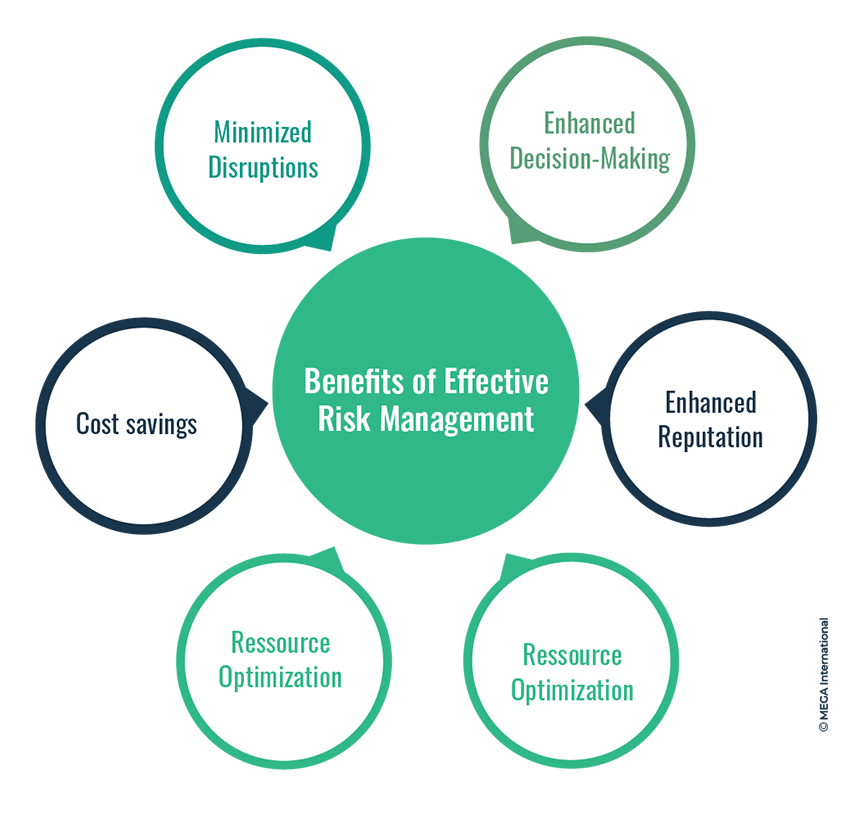Navigating the Challenges: Understanding the Importance of Risk Management
Navigating the Challenges: Understanding the Importance of Risk Management
Blog Article
Exploring the Importance of Risk Management for Effective Decision-Making Strategies
In the complex world of company, Risk Management becomes an important factor in the decision-making procedure. The ability to determine potential dangers and opportunities, and plan accordingly, can lead to the difference in between success and failure. With tools such as SWOT and PESTEL, organizations are outfitted to make enlightened options, promoting durability and flexibility in an ever-changing setting. Wondering how this functions? Allow's unload the dynamics better.
Understanding the Concept of Risk Management
Risk Management, an important component in decision-making, is usually misinterpreted or oversimplified. Risk Management includes structured and self-displined methods, making use of data and informative assessments. From economic uncertainties, legal responsibilities, strategic Management mistakes, to mishaps and all-natural disasters, it deals with numerous risks - importance of risk management.
The Function of Risk Management in Decision-Making Processes
In the realm of calculated preparation and business operations, Risk Management plays an integral role in decision-making procedures. It assists in identifying potential risks and unpredictabilities that can affect the achievement of service purposes. By tracing these risks, business can create strategies to reduce their effect, ensuring service connection and stability. Risk Management hence becomes an essential tool in decision-making, assisting leaders to make informed choices based upon an extensive understanding of the risks entailed. It urges a proactive approach, allowing organizations to prepare and anticipate for possible future situations. This considerably lowers the probability of adverse effects, advertising much more reliable and efficient decision-making techniques. Risk Management offers as an essential element in the decision-making procedures of any type of company.

Exactly How Risk Management Enhances Strategic Preparation
In the context of tactical preparation, Risk Management plays a pivotal function. Starting with the recognition of possible threats, it even more encompasses the execution of Risk reduction measures. The duty of Risk Management is vibrant however not fixed, as it demands constant tracking and adjusting of approaches.
Identifying Possible Risks

Executing Risk Reduction
Having developed the value of recognizing potential risks, the following step is to discover Risk reduction. This process entails developing and implementing methods to manage identified threats successfully. It is a critical aspect of critical planning as it enhances decision-making by minimizing prospective negative outcomes. Risk reduction methods can right here range from Risk avoidance, Risk transfer, to take the chance of reduction. Each method should be customized to the certain Risk, considering its prospective impact and the company's Risk tolerance. Effective Risk reduction calls for a deep understanding of the Risk landscape and the possible impact of each Risk. This understanding allows companies to prioritize threats and allot resources successfully, guaranteeing that one of the most substantial risks are dealt with first.
Tracking and Readjusting Methods
Though Risk reduction is a crucial action in critical preparation, constant monitoring and adjustment of these strategies is just as crucial. It likewise offers an opportunity to evaluate the success of the Risk Management measures, permitting changes to have a peek at these guys be made where needed, additional enhancing critical preparation. Tracking and adjusting Risk Management strategies is an essential element for enhancing a company's strength and tactical preparation.
Case Studies: Successful Risk Management and Decision-Making
In the globe of business and financing, successful Risk Management and decision-making typically offer as the pillars of flourishing business. These cases highlight the worth of sharp Risk Management in decision-making procedures. These instances highlight the crucial duty of Risk Management in strategic decision-making.
Devices and Techniques for Effective Risk Management
These devices, such as Risk registers and warm maps, aid in identifying and evaluating potential risks. Risk action approaches, a vital part of Risk Management, involve approving, staying clear of, moving, or mitigating risks. With these tools and techniques, decision-makers can browse the complicated landscape of Risk Management, therefore promoting educated and efficient decision-making.
Future Patterns in Risk Management and Decision-Making Methods
As we check out the huge landscape of Risk Management, it becomes obvious that the devices and techniques made use of today will certainly continue to develop. The principle of Risk society, where every member of an organization is conscious and entailed in Risk Management, will acquire much more importance. These fads herald a more inclusive and positive technique in the direction of Risk Management and decision-making.
Verdict

Risk Management therefore comes to be an essential tool in decision-making, assisting leaders to make educated options based on a thorough understanding of the threats entailed. Risk mitigation approaches can vary from Risk avoidance, Risk transfer, to risk reduction (importance of risk management). Effective Risk mitigation requires a deep understanding of the Risk landscape and the potential effect of each Risk. Risk action approaches, an essential element of Risk Management, involve accepting, staying clear of, moving, or mitigating threats. The concept of Risk culture, where every member of a company is conscious and involved in Risk Management, will certainly obtain a lot more prestige
Report this page